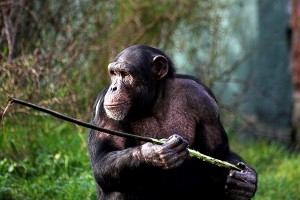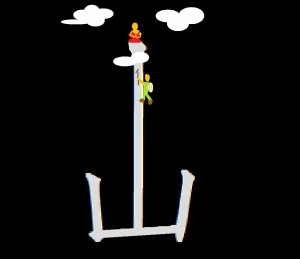Zen and the Art of Recruiting—the Fivefold Way of the Job Master
You may think that the story of the quest, question and answer that follows is as flaky as New Age granola, but there are profound lessons for recruiters in it—especially lessons for recruiters as teachers, guides and advisers.
The Quest
The story is more legend than history, but the way it is told, a young 18th-century adventurer, as full of questions as zest for life, embarked on a global odyssey in search of wisdom and the wise who possessed it.
As yet unsuccessful as a decade-long quest, his hunt for enlightenment and the enlightened at last brought him to the base of one of the steepest peaks of the fabled Himalayas. He had heard stories of a Wise One, a Knower, said to sit in perpetual meditative serenity at the lofty summit of the mysteriously beckoning, mist-enshrouded mountain.
The stakes in the perilous climb, like the mountain itself, were dizzyingly high: gambling his life in order to understand and master it—an undertaking as bold, courageous and reckless as that of a physician inoculating himself with a virus in order to conquer it and its fever.
The first steps being the easiest, he soon found the going increasingly arduous and harrowing. But, undaunted and driven upward by his steady purpose, he groped and clawed his way up, cleaving to each rock face as though it were a cold life-sustaining second skin. Slips were many, but none escalated into a fall.
Struggling to scale the final few feet, he pulled himself up to the edge of the summit’s ledge, and, despite the dense night fog, discerned the serene seated figure of the Wise One. Gasping for air and joy, and seeing the Wise One’s gaze shift to him, he blurted, “Oh, Wise One, I have journeyed many miles and years, but this last step is the biggest of all. Please, tell me the answer!”
With a knowing smile and a tranquil pause, the Wise One replied, “The answer is ‘What should the question be?’”
As I said, this probably seems as flaky as New Age granola. But try to get past that reflex and move on to the practical lessons the story offers.
On reflection that stops short of full-blown meditation, it will quickly be seen how profoundly relevant the Wise One’s reply is to being a recruiter and to recruiting—and that it is relevant in so many ways. Akin to a Zen “koan” (a riddle posed by a Zen master to provoke “satori”—enlightenment), the Wise One’s response can be a recruiting template.
Here’s how:
1.The wisdom of guiding the candidate’s questions: Every job applicant is waiting for “the answer”—“yes” or “no”, hired or not. Like the intrepid climber in this tale of enlightenment, the eager applicant cannot completely focus on anything but the answer and getting it. Yet, a recruiter’s role is often like that of the Wise One: to be a guide to the right question—“Is this the right job for me?”; “Am I being realistic in applying for it?” or “Do I really want this job?” There will be times and applicants for whom the best answer you can give them is not “yes” or “no”, but, instead, “Let’s ask another, more important, prior question.” Think of this as the rule, not the exception and at least the bulk of your applicant-vetting process.
2. The Five-Fold Path to shaping and showing the career path: The presumption that in giving an answer the Wise One is “teaching” raises a second question: Exactly how is the sage teaching?
There are only five possible ways to learn or to teach anything, including as a Zen master, a job candidate or a recruiter:
- Training [behavioral and other conditioning]
- Insight [satori, eureka-experience, etc.]
- Imitation and role modeling
- Memorization [including simple recall of information]
- Inspiration [including all incentivizing]
Traininginvolves teaching and learning through the use of rewards and punishments to shapemthe performance, behavior and responses of another, much as a Zen master mocks off-target responses to a Zen riddle or a Shaolin monk rewards a disciple’s well-executed kung fu moves and punishes the clumsy.
Although more elevated than the goals of a circus trainer, the techniques of Master training utilize essentially the same Pavlovian and Skinnerean conditioned-reflex methods used to train circus ponies.
The question is, in answering the climber or a job applicant, should the Master’s most “instructive” response be a form of training?
If it is, then, in your job, at any given moment the higher priority task is not to “inform”, but to train the applicant to respond in better, more skillful ways.
In interviewing, this can mean that instead of merely figuratively snapping the whip or your fingers and providing the expected cues for rehearsed, memorized stock responses to anticipated questions, you respond to the applicant’s remarks in a way that shapes, refines and replaces what would have been the next scripted applicant response.
For example, instead of cueing the applicant with the familiar, “Tell me about your most recent project”, you respond to her freely volunteered mention of a project or elicit it with a thoughtful, even provocative question that will shape not only her next response, but also her own understanding of that project, e.g., “So, what is the difference between the project that you managed and the project of getting this job?”
Insight, strictly speaking, cannot be taught in a single concrete situation. When animal psychologist Wolfgang Kohler’s gorilla Sultan suddenly realized that out-of-reach fruit could be poked and freed from a tree by inserting one length of bamboo into another on his own. A notch higher on the evolutionary scale, Socrate
His method, understandably called the “Socratic method”, employed reason solely as a catalyst—not a substitute—for a pupil’s insight, a process almost always set in motion by a simple question Socrates posed, e.g., “So, if justice is giving each man what he is owed, should you return knives (or sharp sticks) entrusted to you by a friend who has since gone violently insane?”
Applying this as the mountain-top Wise One did, like him and Socrates, you, as a recruiter, cannot “teach” a specific insight; you can pnly guide achievement of it by replacing “taught” information with catalytic questioning, e.g., “Do you think a job is a measure of your value or your values?”
True, this specific question, like so many, implicitly can teach a distinction (in this case, “value” vs. “values”) that can, in turn, trigger an insight. But, in the end, the insight it aims to trigger will belong entirely to the applicant.
Imitation is fundamentally and always a learning technique. On the supply side of teaching, imitation’s counterpart is being a role model. Here too, so-called “lower” primates can excel, as some chimpanzees have, when grasping how to assemble two sticks—Sultan-style, after watching a video that showed it being done.
Similarly, the well-documented case of an entire population of Japanese macaque monkeys on the island of Koshima learning how to clean and salt sweet potatoes by watching a single female named “Imo” immerse hers in the sea evidences the power and role of imitation as a learning method. Without it, baby-babble would never develop into the more coherent, although frequently equally puzzling talk of teenagers.
On the learning side of the equation, imitation can take the form of role-modeled, imitated or vicarious-experience induced empathy (either compassionate, which I’ll call “Emp1”, or manipulative, “Emp2”—the latter, like that of a crafty used-car salesmen who can crawl inside the minds of car lot visitors, or it can be what sociologists call “Verstehen”, i.e., interpretive understanding and viewing others by putting oneself in their shoes, thereby making them the subject of your observations, rather than the object.
Otherwise, more commonplace copying and role-modeling can often suffice, e.g., matching the [in]formality of the interviewer or setting it as the tone of the interview, if you’re running it.
Clearly, the young mountain-scaling adventurer was anticipating copying,and therefore imitating, the Wise One in some way.
As a minimum, the truth-seeker hoped to make his own copy of whatever “meme” of wisdom that resided within the mind of the mountain sage.
Equally likely, he aspired to authentically and behaviorally emulate the Wise One’s serenity. To the extent that the Wise One sought to teach as a role model, the point of his question-within-a-reply was to, like Socrates, be copied as a source of questions, rather than a source of answers. The same goes for recruiters.
Applying this imitation-based method to your job as a recruiter, like the Wise One, you will serve as a (preferably positive and wise) role model for job applicants. Painful though it may be, this means, among other things, replying to each and every one of them. This will reward and encourage them to show the same consideration in all their communications with you and the next time they apply for a job, should that become necessary.
You can, even unwittingly, also trigger imitation through your choice of interview and other communication style, e.g., as suggested above, by adopting a relaxed, casual and friendly tone and posture that, by example and encouragement, invites and elicits the same in an applicant.
Whatever you believe is the Way of Wisdom, you can teach it by practicing as well as preaching it.
Memorization can be active, as the result of deliberate effort, or passive remembering—the two ways, for example, that you can learn a phone number. You can also teach it by means of a mnemonic memory trick or aid, such as spelling your phone number for someone (e.g., 555-MICHAEL (555-642-4235)). [Note: Don’t call, for more wisdom or anything else. “555” tells you it’s fake, as it does in every Hollywood movie.]
The upward path to wisdom and personal success is sometimes thought to require lots of memorization, e.g., of Biblical commandments, Sunday-school catechism, the entire Quran, the thoughts of Mao, Buddhist sutras, interview and resume checklists or the Starbucks trainee handbook.
(Humorous thought: If the Wise One had merely chanted “Om” (the sacred syllable of esoteric tradition)—or been thought to have done so, when in fact he had merely uttered a clueless “Um…” (as in “Um…er….I don’t know”) that might have been memorized by the Seeker and thereafter mindlessly repeated as an exercise in no-mind chanting and blind imitation.)
As learners and teachers, recruiters can usefully draw upon memorization as a critical tool for enlightenment of job applicants and self-enlightenment, ranging from teaching and remembering the office fax number to memorization of “the seven steps to a successful interview”.
Inspiration is the least direct of all of the learning and teaching methods, because, rather than communicating content, it motivates. Unquestionably, the mere existence of the Wise One inspired the adventurer’s hope that the quest would not be futile.
Likewise, whether you find someone a job or an employee, or not, there is always the possibility that you will teach others the art of persistence, imbue them with the hope persistence requires or simply give them a reason to strive in the first place.
Now, Grasshopper, grasping the Zen Master’s Fivefold Path to job satori—training, insight, imitation, memorization and inspiration—you are ready to enrich your own cycle of learning and teaching.
These 5 Ways should serve you well on your own path to and quest for the summit of wisdom and pinnacle of success for yourself and those you guide.
…if you are not already there.
_____________________
Top image: “The Climb”, by Michael Moffa


